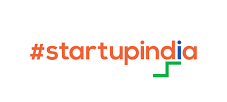Digitization in Healthcare
Industry Insights | 03 June 2022 | Ratna Priya
Every industry has almost witnessed the impact of technology that how significantly it has changed our lives from living modern to living healthier and longer as well. The pandemic has hastened digital transformation and fundamentally altered the way businesses in many sectors and regions operate, including healthcare, where reliance on face-to-face communications and appointments has considerably decreased.
The Covid scandal highlighted the need for a far more risk-averse end-to-end digital approach to meet the new reality that healthcare professionals and patients face. Clinicians have forced to limit the types of patients and treatments they accept, resulting in a 50 percent drop in visits and revenue.
At the start of the pandemic, virtual waiting rooms digitally transformed the healthcare sector by introducing new efficiencies, ensuring patients continue to receive excellent care while surgeries remain viable. The contactless patient journey has become the new normal because of this.
Given the numerous issues it faces, the healthcare business exhibits openness to changes and new technological advancements by the end of 2021. From robotic surgeries to smart hospitals the digital transformation has brought revolution in patient care in exciting ways.
The need for digital transformation in healthcare
Digitalization has enabled doctors and nurses to connect and engage with patients remotely while maintaining a favourable patient experience. The time-consuming job of trying to reach your doctor, filling out lengthy documents, and waiting in a busy waiting room has been reduced thanks to the digital change in healthcare. It has been proved that, with the correct technology, healthcare may be as efficient as other industries.
However, healthcare businesses took advantage of seamless connectivity with patient and practice management systems to enable practitioners to design and deliver health-related communications, reminders, recalls, and alarms to patients, as well as collect post-treatment feedback.
Long associated with non-interoperable systems and inaccessible data, healthcare IT is increasingly elevating data usage and analytics across the board, to the advantage of patients, caregivers, and hospitals. In collaboration with patients and communities, predictive modelling and genetic sequencing are becoming essential components of fully digitized health systems. The digitization of medical records has cleared the door for a new era of care that is significantly more informed, inventive, and individualized. Let us have a glance.
Shift from an era where patient’s records were put in silos and used to be stagnant was comparatively harder to analyse and compare than today where electronics record system has enhanced chances of real time support to clinicians as patient’s records are easier to search, retrieve and maintain and can be stored for a longer period. Remote treatment is also feasible now 24 *7 because of ubiquitous access to electronic records, which increases options for seeking alternative opinions and reviewing evidence-based medical research. Here comes the supreme benefit of digital database which is the key to providing the right data to caregivers according to their requirement and is also helpful for data scientists for discovering new protocols and setting up health trends.
EHR data assists hospital administrators in better understanding how to improve overall community health while maximizing internal resources. To define best practices and give value to both patients and hospitals, hospitals and health systems will rely extensively on data-driven evaluations of operations and surgeries.
With such a unique and welcome change in healthcare industry, it’s become even easier for patients to access some of the best diagnostic tools, new cutting-edge treatments and a myriad of minimally invasive treatment procedures resulting in less pain and faster healing. Remote consultations with doctors, focused therapies, and the accessibility of user-friendly mobile apps have all resulted in better patient care and an overall better healthcare experience. Furthermore, the availability of innovative therapeutic technologies that result in better outcomes has improved the patients’ quality of life.


Who We Are
ITOne Infotech headquartered in Pune is an entity of One Group of Companies. We are a one-stop destination for all your ITSM needs, envisioned to rank as a top managed service provider with global footprints.
Supported Industries
Address
kundan Bhavan, Kundan Nagar, Mumbai-Pune Road, Dapodi, Pune 441012 Maharashtra (IN)




















